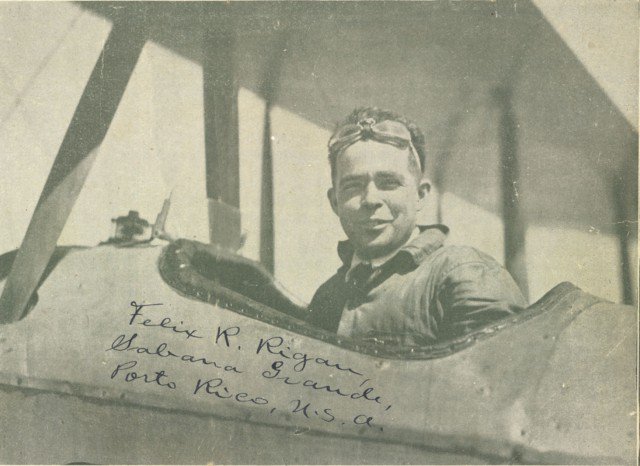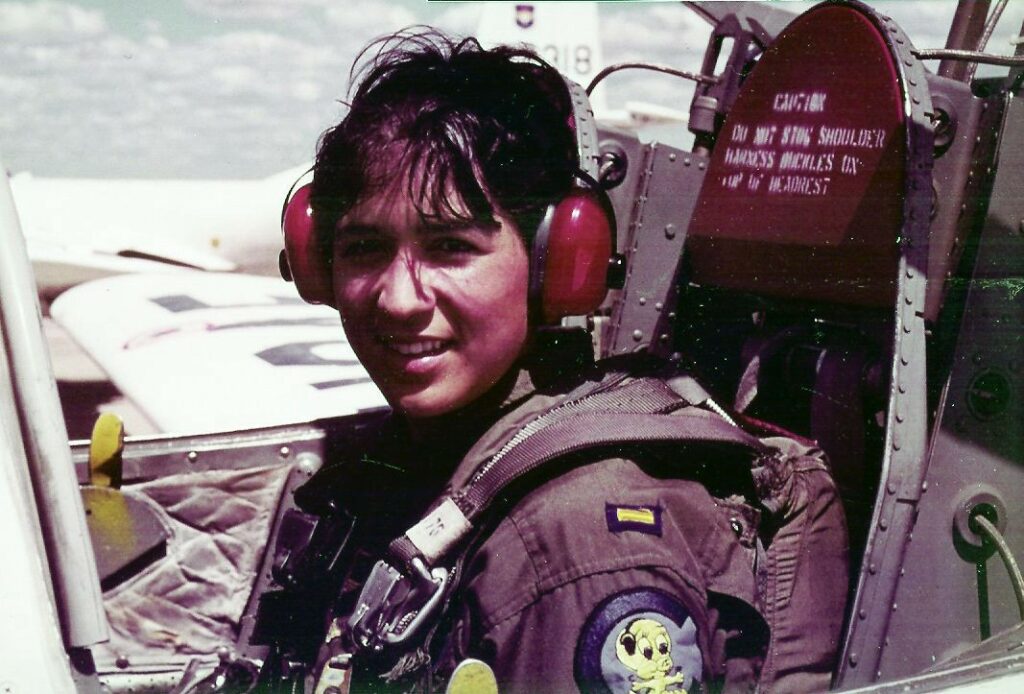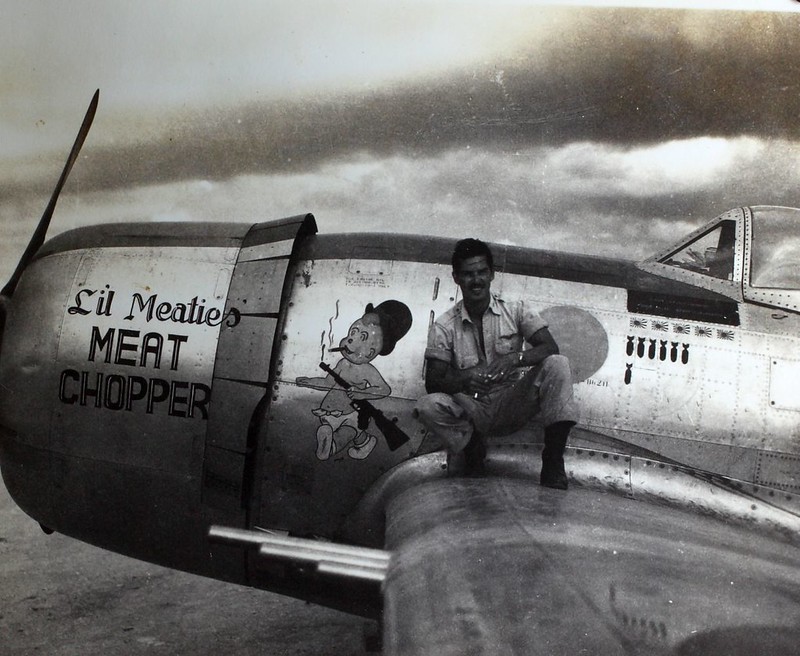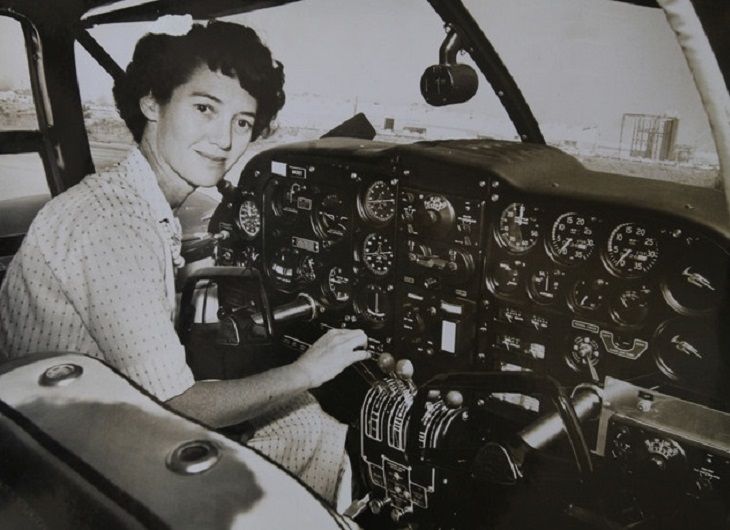Latinx Aviators Make Their Mark in the Skies
Pioneering men, women deserve spotlight for accomplishments
By Matt Neistei
Published October 10, 2022
Read Time: 8 mins
The storied history of Latin American contributions to aviation, which spans the globe, is rarely told.
The Latino Pilots Association, formed in 2015, aims to change that by encouraging more young men and women with Latin American heritage to pursue careers in the aviation industry and build upon those accomplishments.
“They need to see Latinas and Latinos in positions of leadership so that they can see themselves,” said Claudia Zapata-Cardone, the group’s current vice president and incoming president in January. The daughter of Colombian immigrants, she’s also a captain for United Airlines.
“We show these children that this is a path that is available to them in spite of what they may have heard, in spite of their circumstances.”
Representation matters, Zapata-Cardone says, and so does telling the many success stories of Latinos and Latinas in aviation, citing NASA’s Diana Trujillo, with whom Zapata-Cardone shares her Colombian heritage.
In honor of National Hispanic Heritage Month, here are six of those stories, including Trujillo’s incredible journey.
Diana Trujillo: Path to the stars
In 2000, 17-year-old Diana Trujillo spoke virtually no English and had only $300 in her pocket.
Her family’s struggles in Colombia—sometimes she only had half a boiled egg to eat for lunch—had motivated her to come to Miami seeking a better life. She worked as a housekeeper and in a bakery while taking English lessons at a community college.
Strong in math, Trujillo decided to study aerospace engineering at the University of Florida. Her senior year, she applied for the NASA Academy—the first immigrant Latina ever admitted. She was one of only two participants to get job offers from the space agency.
By 2009, she was a telecom systems engineer for the Mars Curiosity rover, and in 2012, she was one of the first people ever to see a picture of the planet’s surface.
Trujillo’s NASA career has steadily advanced, focused on Mars exploration, including serving as a mission lead for both Mars rover missions. This summer, NASA promoted her to flight director, where she will help oversee operations of the International Space Station, commercial crew, and Artemis missions to the Moon.
But no matter how far she goes—the U.S., the ISS, Mars—Trujillo’s roots stay firmly planted in Colombia. In 2021, she received the Cruz de Boyacá, the highest honor that nation bestows upon civilians.

Jorge Chavez was the first pilot to cross the Pennine Alps. (Courtesy National Air and Space Museum)
Jorge Chavez: Soaring ever higher
An octagonal fountain featuring a statue of Icarus sits in the center of Brig, a small village in Switzerland.
On the front of the fountain is a bronze relief portrait of Jorge Chavez, whose bright but tragically brief aviation career evokes the Greek myth of the young man who flew too close to the sun.
Chavez was born to Peruvian parents in Paris in 1887. He earned his pilot’s license in 1910 and immediately set off to participate in aviation competitions throughout Europe.
In September of that year, an Italian group offered a $20,000 prize to the first person to fly through the Simplon Pass in the Alps. Five world-famous pilots joined the contest, including Chavez, who had set the world altitude record at 2,700 meters (8,858 feet) only a couple of weeks before.
On September 23, 1910, Chavez launched his wooden Bleriot monoplane from Brig. Frigid mountain winds battered both pilot and aircraft, and as Chavez approached a landing field in Domodossola, Italy, about 35 kilometers from Brig, his plane suddenly plummeted the final 20 meters and crashed.
Chavez was rushed to a hospital, where he died four days later of massive internal injuries. His reported last words were, “Arriba siempre arriba, hasta alcanzar la gloria” — “Higher, ever higher, until you reach the glory.”
He was the first person ever to make an air crossing of the Pennine Alps. In his honor, Peru holds National Aviation Day every Sept. 23. The center of the celebration is the nation’s largest airport, in the capital city of Lima: Jorge Chavez International Airport.

Felix Rigau Carrera was known as “the Eagle of Sabana Grande,” his hometown in Puerto Rico. (Courtesy National Air and Space Museum)
Felix Carrera: The pride of Puerto Rico
Born in 1894, Felix Rigau Carrera always loved flying.
As a child in Sabana Grande, Puerto Rico, he built model aircraft and used the local cathedral as a launchpad for them.
After earning a degree in mechanical engineering, Carrera joined the U.S. Signal Corps (the aviation branch of the U.S. Army and a predecessor of the Air Force) in 1914, where he became the first Puerto Rican parachutist.
Upon leaving the military, he earned his pilot’s license. With the outbreak of World War I, he rejoined the service and was commissioned as a second lieutenant in the U.S. Marine Corps—the first Latino fighter pilot in that branch.
After the war, he returned to Puerto Rico, becoming the first native pilot to fly out of the island’s first commercial airport. In 1931, San Juan’s mail system licensed him to deliver across the island, making him the first air mail carrier in the country’s history.
Carrera later moved to the U.S. and led several successful business endeavors, including owning a concrete factory and a funeral home. But the story of “El Aguila de Sabana Grande”—the Eagle of Sabana Grande, as he was known—lives on in his hometown, where a street and the American Legion post bear his name.

Olga Nevarez Custodio was the first Latina pilot in the U.S. military. (Courtesy U.S. Air Force)
Olga Custodio: First Latina pilot in U.S. military
Olga Nevarez Custodio’s unassuming start in aviation belied the unprecedented career she would ultimately achieve.
Born in Puerto Rico, Custodio was raised in an Army family that moved around the world. Parts of her childhood were spent in Taiwan, Iran, Paraguay and the U.S.
Returning to Puerto Rico in her teens, she graduated high school at 15 and enrolled at the University of Puerto Rico in the late 1960s, where she attempted to join ROTC but was turned down because she was not a man.
She eventually broke into the aviation industry with airline Prinair—as an accountant.
During a later stint working with the U.S. Department of Defense in Panama, she applied for the U.S. Air Force Officer Candidate School. When the recruiter asked her what job she wanted, she replied, “A pilot, a pilot or a pilot.”
The Air Force accepted her as a pilot candidate, and in 1981, she became the first Latina pilot in the US. military, serving as an instructor. After six years, Custodio moved to the Air Force Reserve.
She broke new ground again in 1988, becoming the first Latina pilot for American Airlines. She flew the airline’s various Boeings—and even piloted a Fokker 100 at times—domestically and internationally.
After 20 years and more than 11,000 flight hours, she retired from commercial aviation in 2008 as a captain. Her 24-year military service had ended in 2003, when she retired as a lieutenant colonel.
The first Latina inducted into the San Antonio Aviation and Aerospace Hall of Fame, Custodio—who received the 2022 STEM Award during the 35th Annual Hispanic Heritage Awards in August—now partners with organizations that work toward the advancement of women, Hispanics and underserved individuals in the aviation industry.
“I was not out to prove anything. I didn’t even know I was the first anything,” Custodio told Fox News Latino in 2012. “I only realized I was the first Latina military pilot when I had my first female student at pilot training. She was the first Latina to graduate from the U.S. Air Force Academy.”

First Lt. Oscar Perdomo’s P-47 Thunderbolt was named and decorated in honor of his young son. (Courtesy San Diego Air and Space Museum)
Oscar Perdomo: The last ‘ace in a day’
Air-to-air combat is nearly extinct as technological advances change the very nature of war. The honorific of “ace,” given to a military pilot with at least five victories in the sky, may never be earned again—the last American aces flew in the Vietnam War.
And the last “ace in a day,” a pilot who records at least five kills in a single day, for the U.S. was a Mexican-American fighter pilot named Oscar Perdomo who served during World War II.
Born in Texas (his father fought in the Mexican Revolution under Francisco “Pancho” Villa), Perdomo graduated from an Arizona pilot school in January 1944 and then underwent training on P-47 Thunderbolts with the Army Air Forces in California.
Stationed off the coast of Japan in the summer of 1945, 1st Lt. Perdomo’s mission was to escort and protect U.S. bombers. He flew a Thunderbolt he called “Lil Meaties Meat Chopper” that had nose art of a baby smoking a cigar and holding a rifle, an homage to his young son.
On Aug. 13, 1945, four days after the nuclear bomb was dropped on Nagasaki, Perdomo and 37 pilots from his fighter wing encountered about 50 enemy aircraft near Seoul, South Korea. Perdomo shot down four fighter planes and a biplane trainer that day.
It was his last combat mission; two days later, Japan surrendered.
Perdomo was awarded the Distinguished Service Cross and the Air Medal with a leaf cluster. He served in the U.S. Air Force until 1958, leaving as a major.

Berta Zeron was the first Mexican woman to earn a commercial pilot’s license. (Source unknown)
Berta Zeron: Flying planes—and jumping out of them
A chance encounter with a legendary American pilot’s plane sparked a passion for aviation in another pioneer that took decades to fulfill.
As a child, Berta Zeron grew up in Pachuca, Hidalgo, Mexico. At age 11, she moved to Hawaii with her father. Two years later, in 1937, she was returning to Mexico when she discovered an airplane that belonged to Amelia Earhart aboard the ship, a memory that stuck with her forever.
Years later, Zeron worked at Mexico City’s international airport to accommodate her love of airplanes. But it was not until 1947 that she began moving toward her dream of becoming a pilot.
Zeron did not complete her first solo flight until 1964, at 40 years old, but quickly earned her private pilot’s license in 1965. She learned how to fly twin-engine planes, was trained in instrument and night flying, and even practiced aerobatics.
In June 1966, she became the first woman in Mexico to be awarded a commercial pilot’s license and started working as a flight instructor.
Flying planes, it turned out, was not enough. She became intrigued by parachuting, and soon became one of the first female skydivers in Mexico.
Zeron subsequently competed in international air races and served as a private jet pilot. In January 1996, at 71 years old, after accumulating more than 10,000 flight hours, Zeron took to the skies as a pilot for the last time in a Cessna 206.
“Para mí la aviación es mi razón de vivir,” she reportedly once said. “Es toda mi vida.”
“To me, aviation is the reason why I’m living. It’s my whole life.”
Watch
This Next
Read
This Next





